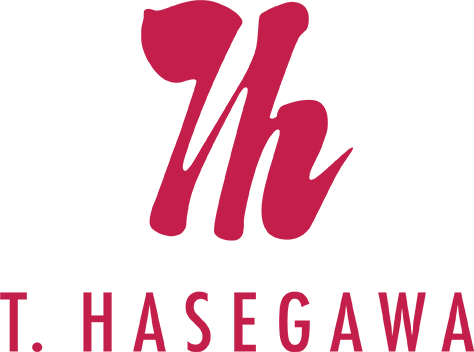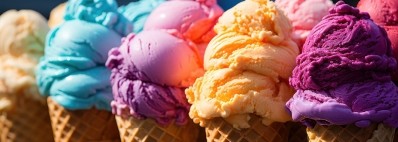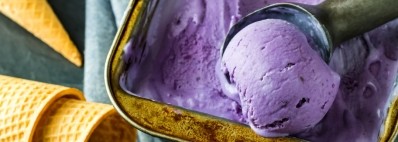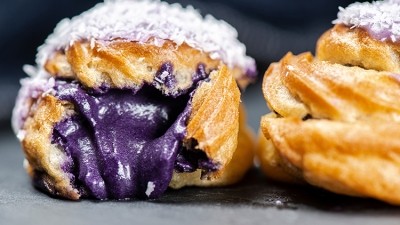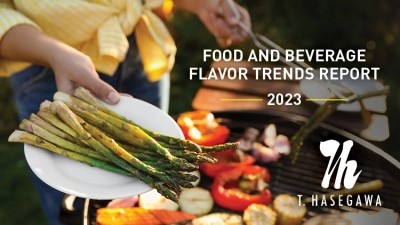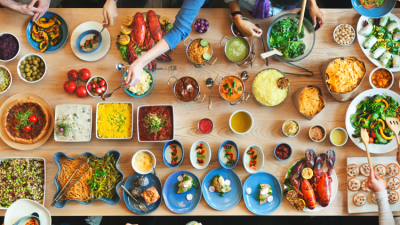Promotional Features
Bottoms Up! How flavor science is shaping post-pandemic alcohol trends and giving consumers exciting new reasons to raise a glass
It’s no surprise that the role of alcoholic beverages has drastically changed in North America over the last couple years. Fueled by a period of increased alcohol consumption during the COVID-19 pandemic, consumers are eager for change and demand more sophisticated flavors and exciting experiences from their alcoholic beverages.
From the rise of RTD alcoholic beverages that provided convenience and enjoyment to consumers sheltered at home, to the excitement of new beer, wine and spirit flavors, and the evolving role of foodservice – all aspects of the alcoholic beverage category were impacted by the pandemic. More than two years later, the industry is just beginning to understand how changes in consumer behavior during the pandemic may be permanent, as consumers form lasting habits and evolved tastes in their alcoholic beverage consumption.
Restaurant Refreshment
No segment of the food & beverage industry felt a greater impact by the pandemic than foodservice. According to Mintel research, on-premise alcohol sales plummeted 28% in 2020 alone, due to the close of indoor dining during the initial lockdown period. As bars and restaurants around the world temporarily closed in 2020, followed by a period of reopening and navigating major changes in operations, consumers who wanted to enjoy their favorite cocktail had to adapt and learn to make these drinks at home. While that change lifted certain aspects of the beverage industry, with the growth of as at-home mixology, consumers developed a greater appreciation for what bars and restaurants offered, once these locations were closed or operating at limited capacity.
Research indicates that consumers are excited to return to their favorite bars and enjoy bartender-crafted drinks after a period of primarily drinking at home. More than 57% of consumers in a 2021 Mintel survey agreed that the pandemic made them appreciate the bar/restaurant drinking experience. Operators can take advantage of this pent-up demand, but the key is providing a premium experience in the form of exciting flavors and memorable drinks that consumers cannot easily replicate at home.
California-based T. Hasegawa USA, the U.S. subsidiary of one of the world’s top 10 flavor manufacturers, is leading the industry in developing more sophisticated alcoholic beverage flavors that deliver on the high-quality experience that consumers demand today. The company has recently introduced several proprietary technologies aimed at improving the flavor and taste experience of beverages, including beer, RTD cocktails, wine and spirits and more.
“The alcoholic beverage category is undergoing immense changes in the way we approach product development,” explained Jeanene Martinez, T. Hasegawa’s director of applications. “While the category is quite diverse, all alcoholic beverages need to deliver enjoyment and an elevated experience – most of which comes down to flavor. It’s an exciting time because there is a greater focus on flavors than ever before.”
Food service faces the challenge of economic uncertainty in 2022, which can have a direct impact on the frequency that consumers visit bars and restaurants. While consumers may respond by creating their own alcoholic beverages at home to stay on-budget, restaurants and bars will still hold an important role in delivering the high-quality drinks that consumers cannot replicate at home. The role of flavor is elevating alcoholic beverages to provide a premium experience worthy of visiting a restaurant or bar. After two years of social distancing, consumers are already accustomed to not dining out. A 2021 Mintel survey found that more than half of consumers now prefer socializing within homes, rather than going to bars and nearly 60% of consumers appreciate the cost savings of drinking at home – proving that the challenge is greater than ever to deliver a premium beverage experience.
A Healthier Approach to Drinking
As we gradually move out of the pandemic, many consumers are responding to the boost in drinking over the last two years with demand for reduced alcohol beverages that offer the intense flavor of favorite cocktails, wine and beer with low-ABV. According to a report by Kantar, an estimated 20% of Gen Z and Millennials have dabbled in “drysolation” over the past two years, as the pandemic placed a pronounced emphasis on health and wellness than in previous years. While many of these consumers still partake in alcoholic beverages, lifestyle changes during the pandemic have created lasting changes in their consumption patterns and tastes.
This renewed interest in health and wellness have boosted demand for BFY (better-for-you) products, across all food and beverage categories – including alcoholic drinks in the form of low-calorie and light beer, hard seltzer and lighter cocktails. The appeal in these products is a robust beverage flavor, with lowered alcohol levels, for consumers who want to moderate their alcohol consumption while also reducing sugar and carbohydrates.
In addition to limiting sugar and carbohydrate intake, many consumers are interested in alcoholic beverages that offer functional ingredients with some type of health benefit. For example, numerous beer brands are exploring the use of adaptogenic mushroom ingredients, which claim to have anti-inflammatory benefits, while many RTD cocktails are leveraging green tea, berries and other superfoods that provide antioxidants and other tangible benefits.
The challenge that many brands face is creating clean-label alcoholic beverages that taste great with minimal sugar content while still masking the burning astringency of alcohol. Flavor manufacturers are leveraging innovative technologies and unique development processes to balance the requirements of a low-ABV, low-calorie beverage.
“When you remove an ingredient such as sugar or other sweeteners, the other flavors in a beverage become more pronounced or even modified,” explained Briana Tran, beverage applications technologist at T. Hasegawa USA. “Our task is to reformulate the beverage to recover the optimal flavor profile, using technologies that either mask certain unwanted notes, or amplify desirable flavors that are already in the beverage.”
One such innovation that is being leveraged in the production of alcoholic beverages is T. Hasegawa’s BoosTRACT, which is a proprietary flavor modulation technology. Boostract recovers the kokumi mouthfeel and full-bodied richness which is often lost in the filtration and distillation processes necessary to produce low-calorie fermented alcoholic beverages such as beer, wine, hard kombucha and malted liquor.
“With a technology like Boostract, we’re able to isolate the most desirable flavors in a beverage and produce the ideal representation of that flavor,” said Tran. “For example, if we’re working on a strawberry profile, we can amplify the natural flavor that’s already there and produce a much bolder, true-to-life strawberry taste – even with low-sugar alcoholic beverages.”
Hard Seltzers and RTD Beverages
RTD alcoholic beverages saw a huge uptick early in the pandemic, as consumers at home were looking for convenient variety and were willing to explore new products withing the RTD cocktail and hard seltzer categories. While many RTDs do focus on reduced sugar and other tangible health benefits, these products are typically outliers within the trend of reduced ABV beverages. In fact, the fastest growing segment in RTDs is ‘hard’ seltzers, which tripled its drinker base from 2018-21, according to Mintel research. These seltzer products combine a range of distinct flavored sparkling waters with fermented alcohol and have been wildly successful with younger consumers. According to Mintel, 20% of hard seltzer drinkers first tried these beverages during the pandemic, and pre-mixed RTD cocktails have also enjoyed drastic increase in popularity over the last two years. The distinct flavors of these RTDs draw consumers into the category since they offer a convenient way to add variety to at-home drinking. Mintel research indicates that the RTD is projected to continue growth through 2024, proving that consumer behaviors formed over the last two years will continue long after the pandemic.
Unconventional Ingredients = Adventurous Cocktail Flavors
With a boost in increasingly flavor-focused RTD alcoholic beverages, and the pent-up demand for on-premise drinking in the post-pandemic period, consumer interest has never been greater in adventurous cocktail flavors – many of which focus on delivering maximum flavor with minimum sugar. Foodservice mixologists are the forerunners of this trend, offering a broad range of sophisticated cocktails that go beyond the traditional citrus, berry and stone fruit flavors, exploring the exotic taste of botanical and floral notes and seasonal ingredients, spices and fresh herbs. Savory flavors have also grown in popularity, since they help balance the sweet nature of many fruit-flavored beverages. In a recent Mintel survey, more than 30% of participants expressed future interest in trying alcoholic beverages featuring chili pepper, basil or turmeric. Flavor manufacturers are focusing technology and resources on finely crafting these unconventional ingredients to produce great-tasting spirits that deliver the excitement that consumers are thirsty for in RTD retail beverages or foodservice products.
Beyond adventurous ingredients, both RTD and foodservice cocktails are leveraging the power of nostalgia and fun in new flavor development. Indulgent ‘dessert’ cocktail flavors that tap-into nostalgia are growing increasingly popular, including s’mores, apple pie, churro, chocolate brownie and orange vanilla milkshake. Coffee has experienced a major shift in demand over the last few years, particularly among young males with over 69% of men aged 22-24 in a recent Mintel survey citing a key interest in or experience with coffee flavored alcoholic beverages.
These flavors were already growing in popularity before the pandemic, and became a major focal point in 2020, as consumers turned to flavorful cocktails as a source of comfort and excitement.
Post-Pandemic Potation
No doubt, the role of flavor in alcoholic beverages is critical and it continues to grow each year. As consumers demand more out of their cocktails, wine, beer and spirits, the flavor industry continues to innovate and meet this demand – while navigating around consumer interest in healthier ingredients and reduced sugar formulations.
While the pandemic presented a host of unique challenges to consumers and the food & beverage industry, this period was also marked by unprecedented opportunities in flavor exploration. Consumers who initially turned to unique foods and beverages as a source of comfort and excitement during the pandemic are expanding their palate to a world of interesting flavor profiles – leading to a surge in new product development across all categories, with flavor being the key to differentiation. As the role of alcoholic beverages continues to evolve for consumers, the flavor industry stays ahead of these trends and offers technology and processes that deliver great-tasting solutions – giving consumers more of what they already want.
Food and beverage brands who are looking to take their alcoholic beverage products to the next level of flavor can explore the possibilities by contacting T. Hasegawa USA at www.thasegawa.com or by calling (866) 965-0502.

